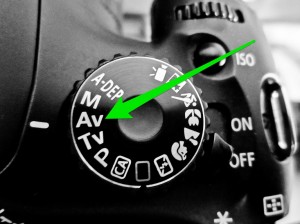Being able to control the depth of field in your images is a REALLY powerful way to change the way your picture looks. First let’s define depth of field.
Depth of field is the zone of distance in front of the camera that is in focus. Depending on your camera settings, this zone could be thin (shallow) or thick (deep).
Imagine that you put a tape measure and your camera on the ground with the zero right under your lens and the rest of the tape measure stretching out into the distance. Let’s say you put a toy car at 7 feet. If you were to sharply focus on that car and set your camera for a deep depth of field (I’ll tell you how in a bit), cars at 5 and 9 feet would also be in focus, while cars “outside” the depth of field (i.e. 2 and 12 feet) would be out of focus and blurry.
Now let’s say you change the settings on your camera for a shallow depth of field. What would happen if you focused on that same car at 7 feet? If you had a shallow depth of field the cars at 5 and 9 feet would also become blurry because they are now “outside” the zone of the narrower or shallower depth of field. The “width” of clear / sharp focus has become “thinner” so only the car at 7 feet (your main subject) is still in focus. Of course the cars at 2 and 12 feet are even more out of focus.
If you want a lot of the scene in focus (i.e. a nearby cactus with mountains in the landscape background), you’ll want a deep depth of field. If you want to purposely blur out the background (a really cool technique on a headshot to have clear focus on the face, but blur out the background) you’ll want a shallow depth of field.
How to control the depth of field.
There are several things that control depth of field.
Distance to main subject
Focal length
Aperture
Distance to main subject
If your subject is close (i.e. 2 feet away) your depth of field will be shallower than if your subject were further away (i.e. 15 feet)
Focal Length
If you use a long telephoto length (i.e. zoom in to 200mm) your depth of field will be shallower than if you zoom out to a wide angle (i.e 24mm).
Aperture
If you use a small aperture number (i.e. f1.4 or f2.8) your depth of field will be shallower than if you use a large aperture number (i.e. f16 or f22)
SO …
If you want a shallow depth of field, have your subject close, zoom in with telephoto lens and set your aperture to f1.8. Only your subject will be clear / in focus and everything closer or farther away will be blurry.
If you want a deep depth of field, have your subject farther away, use a wide angle lens and set your aperture to f16. Lots of things, close up and far away, will be clear and in focus.
 On most cameras, you can control or set your aperture by using “Aperture Priority” mode. This setting is usually designated by “Av” or “A”.
On most cameras, you can control or set your aperture by using “Aperture Priority” mode. This setting is usually designated by “Av” or “A”.






Another nice concise article. I love the summary, it makes it easy to remember in field.
Please keep this awesome articles coming!
This is awesome and so informative!
Well-written and the images reinforce the points nicely.
This is a great article as I have never understood this depth of field thing very well. You are very good at explaining things in simple terms. Thanks!
Very informative!
Very informative – can’t wait to put it into practice
Very helpful. Great pics to help describe depth. When taking photos, this concept is what sets a good photo apart. Thanks for the simple explanation.
Good explanation, thanks for it!
You’re most welcome!